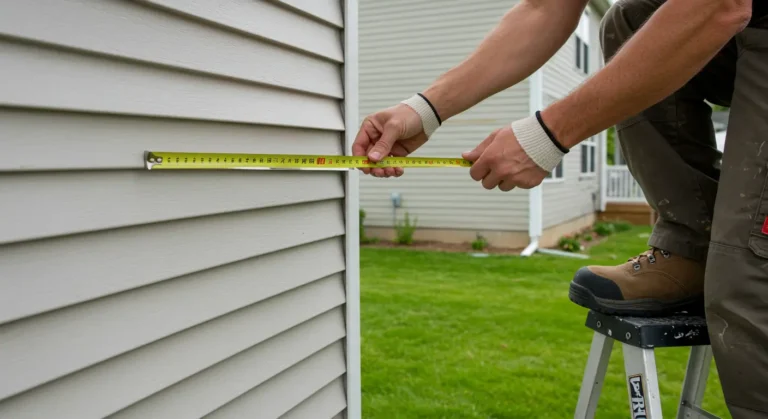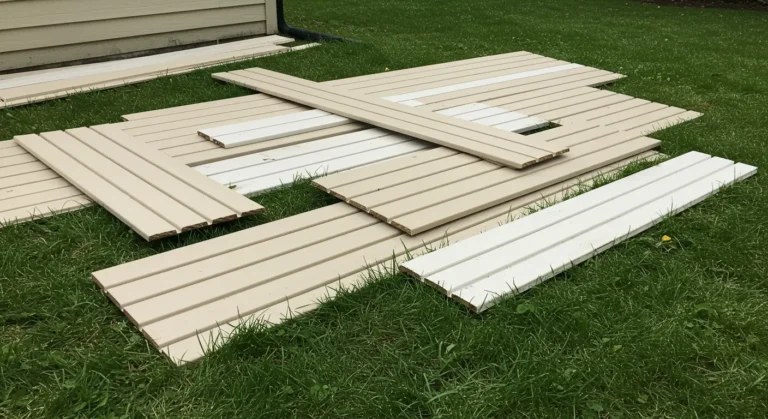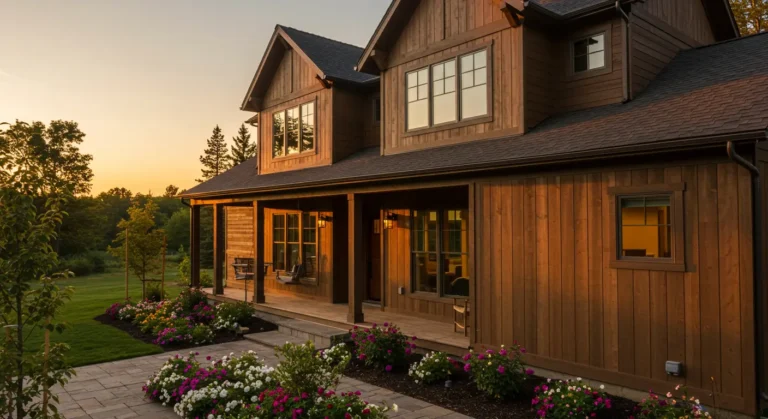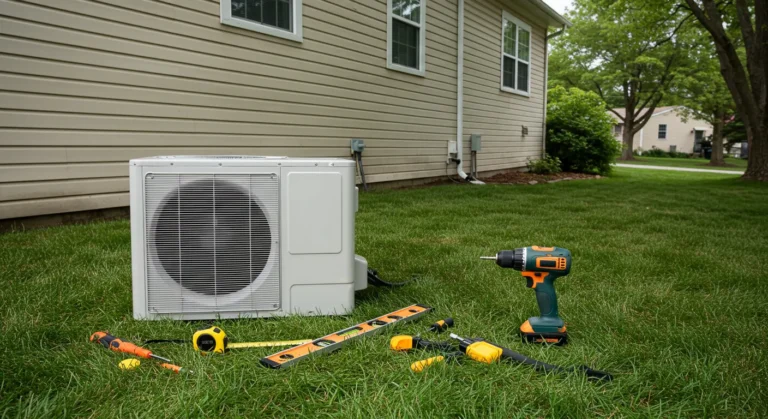Vinyl siding is one of the most popular materials used on American homes thanks to its affordability, weather resistance, and low maintenance. But as time passes, even durable vinyl can begin to fade, look dated, or clash with your home’s evolving aesthetic. So, what can you do?
Many homeowners ask: Can you paint vinyl siding? The good news is that you can if it’s done correctly. But painting isn’t always the best solution. In this guide, we’ll explore the pros and cons of painting vinyl siding, when it makes sense, how to do it the right way, and when you’re better off replacing it altogether.
Is It Okay to Paint Vinyl Siding?
Yes, it’s okay to paint vinyl siding under the right circumstances. Homeowners across the country, especially in places like Metairie, where humidity and heat can take their toll, are turning to paint as a cost-saving and aesthetic solution. But you’ll want to make sure your siding is in good condition and that you’re not voiding a warranty before getting started.
When Painting Is a Good Idea:
- The siding is structurally sound (no cracks or warping)
- The color is faded or outdated
- You’re looking for a budget-friendly upgrade
- You want to change curb appeal without full replacement
When NOT to Paint Your Vinyl Siding:
Painting may not be a smart move in these cases:
- The siding is brittle, warped, or cracked
- There’s mold or deep mildew damage
- The panels are loose or aging beyond 20 years
- Your warranty forbids modifications like painting
- You live in a high-heat climate and want a much darker color
Tip: When in doubt, get a professional opinion; book a free siding inspection to know if your siding is a good candidate for paint or replacement.
Pros and Cons of Painting Vinyl Siding
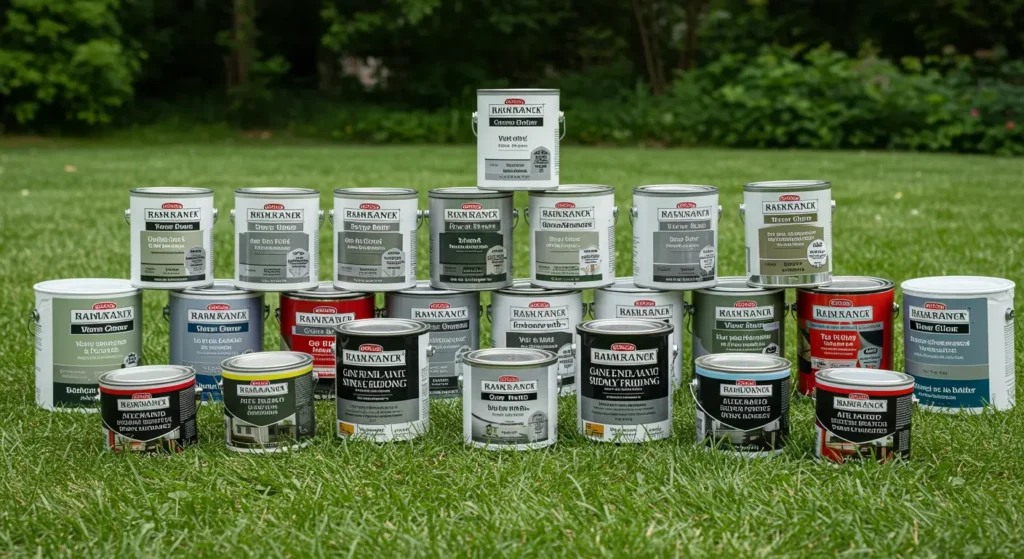
Weighing the benefits and drawbacks is crucial before starting this type of exterior renovation. Below is a breakdown of what to expect:
Pros of Painting Vinyl Siding
- Cost-Effective – Painting is significantly cheaper than a full siding replacement.
- Custom Appearance – You can modernize your home’s look with updated, trendy colors.
- Eco-Friendly – Reduce landfill waste by extending the life of your current siding.
- Quick Results – Painting can be completed faster than a full install.
Cons of Painting Vinyl Siding
- Potential Warranty Voids – Many manufacturers void warranties if you alter the siding’s finish.
- Fading Over Time – Even high-quality paint may begin to fade after 5–7 years.
- Maintenance Required – Repainting is necessary every 5–10 years.
- Peeling Risk – Improper prep can lead to peeling, bubbling, or cracking.
Check out this helpful Best Paint for Vinyl Siding guide to avoid common product mistakes.
How to Paint Vinyl Siding: Step-by-Step Guide
Done right, painting your vinyl siding can rejuvenate your home’s appearance. Here’s how to do it properly:
1. Inspect and Clean
Start by power washing or scrubbing the siding with water, detergent, and a soft brush. Let it dry completely. Dirt, grime, and mold must be removed to ensure the paint adheres.
2. Repair Any Damage
Check for cracks, loose panels, or warping. Address all issues before applying paint repair, or replace small sections if needed. For major repairs, consider professional siding repair.
3. Choose the Right Paint
The best paint for vinyl siding is a high-quality acrylic latex exterior paint made specifically for vinyl. Brands like Sherwin-Williams offer vinyl-safe options that resist UV damage and flex with temperature changes. See their how-to guide for in-depth tips.
Important: Choose light to mid-tone shades to prevent warping. Avoid dark colors unless the paint is vinyl-safe and heat-resistant.
4. Prime If Needed
If your vinyl siding has never been painted before or shows bare spots, apply a bonding primer for better adhesion.
5. Paint Using the Right Tools
Use a sprayer for large areas and a roller or brush for corners. Two thin coats work better than one heavy one. Let the first coat dry completely before applying the second.
6. Ideal Conditions Matter
Paint on a dry day with temperatures between 50°F and 85°F. Avoid high humidity, strong winds, or direct sunlight to reduce the risk of streaking or uneven drying.
How Long Does Painted Vinyl Siding Last?
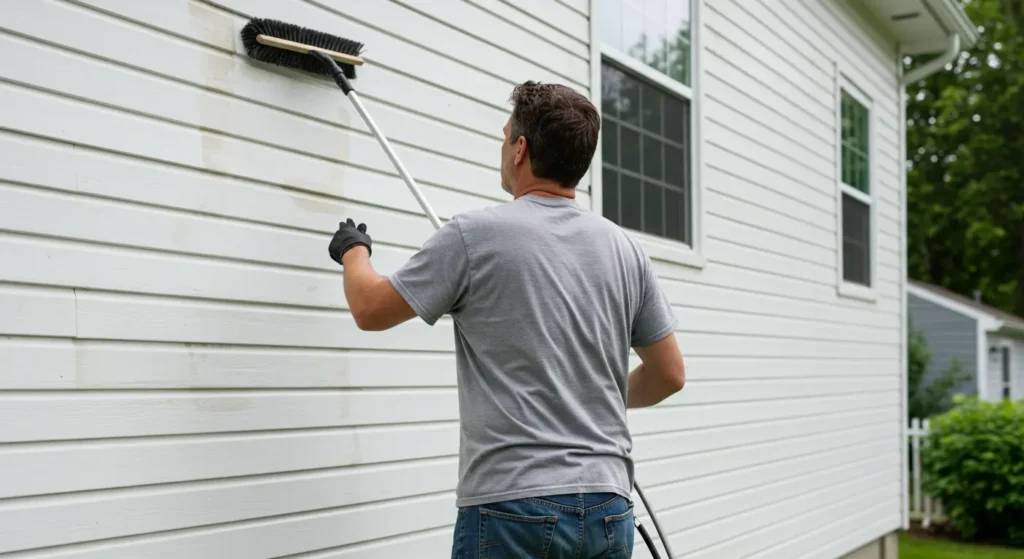
With proper prep and the right materials, painted vinyl siding can last 5 to 10 years, sometimes more.
Factors That Affect Longevity:
- Climate – Hot, humid areas like Louisiana may reduce lifespan due to UV exposure and moisture.
- Paint Quality – Premium exterior paints are worth the investment.
- Preparation – The more thorough the cleaning and priming, the longer it lasts.
- Color Choice – Lighter colors fade more slowly and cause less heat expansion.
Maintenance Tips:
- Power wash annually
- Inspect for cracks and peeling every spring
- Touch up any damaged areas to prevent deeper wear
Should You Paint or Replace Your Vinyl Siding?
Not sure whether to repaint or rip it all off and start fresh? Here’s a head-to-head comparison:
| Factor | Painting Vinyl Siding | Replacing Vinyl Siding |
| Initial Cost | $1,500–$4,000 | $6,000–$15,000+ |
| Time to Complete | 2–5 days | 1–2 weeks |
| Lifespan | 5–10 years | 20–30 years |
| Warranty | May void existing | New warranty included |
| Aesthetics | Good (color update) | Excellent (new texture + design) |
| Resale Value | Moderate | High |
Bottom line:
Painting is a smart short-term solution if your siding is still in good shape. If your siding is aging, damaged, or you’re aiming to sell your home in the next 5–10 years, replacement offers more value.
Learn more about our vinyl siding installation options.
Summary: Is Painting Vinyl Siding Right for You?
Painting vinyl siding is an effective way to enhance curb appeal and extend the life of your home’s exterior. It’s ideal if your siding is faded but still structurally sound, and if you’re working within a budget.
However, painting isn’t always the best answer. If your siding is warped, brittle, or you’re concerned about long-term resale value, replacing it may be the smarter investment.
Still unsure what to do?
Book a Free Siding Inspection and we’ll help you make the right decision based on your specific home and climate.
FAQs About Painting Vinyl Siding
What kind of paint should I use on vinyl siding?
Use high-quality 100% acrylic latex paint formulated for vinyl siding. Look for labels like “vinyl-safe” or consult your local paint supplier.
How much does it cost to paint vinyl siding?
On average, painting costs between $1.25 and $3 per square foot, or around $2,500–$4,000 for an average home.
Will painting vinyl siding void my warranty?
Often, yes. Most vinyl manufacturers void the warranty once the siding is painted. Always check your warranty terms before proceeding.
Can I change my vinyl siding to a darker color?
Only if the paint is specially formulated to resist heat. Dark colors can absorb sunlight and warp the siding.
How long does painted vinyl siding last?
Typically, 5 to 10 years with proper preparation, high-quality paint, and ongoing maintenance.
Can I paint vinyl siding myself, or should I hire a pro?
If you’re confident with prep and paint tools, it’s a doable DIY project. But hiring a pro ensures better durability and warranty-safe work.
Does painted vinyl siding require maintenance?
Yes. Regular cleaning, inspections, and occasional touch-ups will help maintain appearance and performance.
Will painting improve resale value?
It can boost curb appeal, but it won’t add as much long-term value as a full siding replacement with a transferable warranty.
Is there a best time of year to paint vinyl siding?
Spring and early fall are ideal; temperatures are moderate, and humidity is manageable.
Ready to give your siding a facelift or start fresh with new panels?
👉 Book a Free Siding Inspection Today

